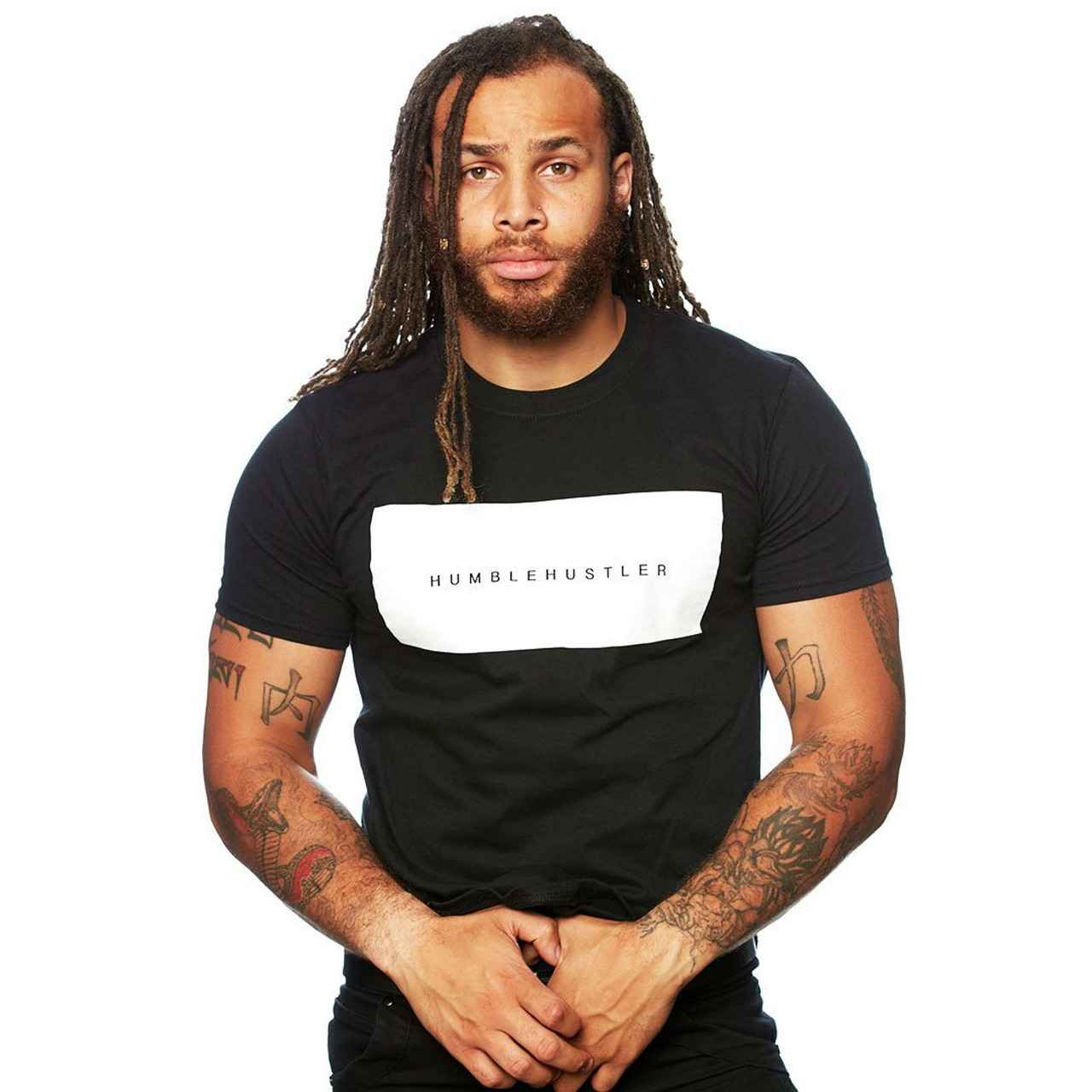This article provides a detailed guide on creating custom t-shirts online, covering everything from design ideas to printing and ordering, ensuring you can easily craft your unique apparel.
Creating your own custom t-shirts can be an exciting and rewarding experience. Whether you’re designing for personal use, a special event, or to promote a business, understanding the process is essential. This guide will walk you through the necessary steps to bring your ideas to life.
Understanding the Basics of Custom T-Shirts
Before diving into the design process, it’s important to grasp the fundamental concepts of custom t-shirt creation. This includes understanding various materials, printing methods, and the significance of an appealing design in attracting customers.
Choosing the Right T-Shirt Material
Selecting the appropriate fabric is crucial for both comfort and durability. Common materials include:
- Cotton: Soft and breathable, ideal for casual wear.
- Polyester: Durable and moisture-wicking, great for sportswear.
- Blend: A combination of cotton and polyester, offering the best of both worlds.
Designing Your Custom T-Shirt
When it comes to designing, you have various options. Online tools allow you to create unique graphics and text that enhance your t-shirt’s appeal. Popular design software includes:
- Canva: User-friendly with a wide range of templates.
- Adobe Illustrator: Advanced features for professional designers.
Finding a Reliable Printing Service
Choosing the right printing service is essential for achieving high-quality results. Consider factors such as:
- Types of Printing Methods: Options include screen printing, digital printing, and heat transfer.
- Evaluating Print Quality: Look for reviews and samples to ensure quality.
Ordering Your Custom T-Shirts
Once your design is ready, the ordering process begins. Be sure to:
- Submit your design accurately.
- Select the right sizes.
- Review pricing and potential bulk discounts.
Promoting Your Custom T-Shirts
After receiving your t-shirts, effective promotion is key. Utilize social media platforms to showcase your designs and engage with potential customers. Additionally, consider setting up an online store to sell your creations.
In conclusion, creating custom t-shirts online is a straightforward process that can lead to unique and personalized apparel. By understanding the basics, choosing the right materials, and effectively promoting your designs, you can successfully bring your vision to life.

Understanding the Basics of Custom T-Shirts
Creating custom t-shirts is an exciting venture that allows individuals and businesses to express their unique identities. This section delves into the essential concepts of custom t-shirt creation, focusing on materials, printing methods, and the significance of design in capturing customer interest.
When embarking on the journey of custom t-shirt creation, understanding the materials is crucial. The choice of fabric not only affects the comfort and fit of the t-shirt but also influences its durability and overall appeal. Popular materials include:
- Cotton: Known for its softness and breathability, making it ideal for casual wear.
- Polyester: Offers durability and moisture-wicking properties, perfect for athletic wear.
- Blends: Combining cotton and polyester can provide the best of both worlds, balancing comfort and durability.
Next, the printing methods available for custom t-shirts play a pivotal role in how designs are transferred onto fabric. Common techniques include:
- Screen Printing: Best for bulk orders, offering vibrant colors and long-lasting prints.
- Digital Printing: Ideal for intricate designs and smaller runs, allowing for high-resolution images.
- Heat Transfer: A versatile method that applies designs using heat, suitable for various materials.
Equally important is the design aspect of custom t-shirts. A well-thought-out design can significantly enhance the attractiveness of the shirt and draw in potential customers. Considerations such as color schemes, typography, and imagery should align with the target audience’s preferences. Effective designs not only convey a message but also evoke emotions, making them memorable.
In conclusion, understanding the basics of custom t-shirt creation involves a careful selection of materials, choosing the right printing method, and crafting an appealing design. These elements are essential in ensuring that your custom t-shirts not only stand out but also resonate with your audience.

Choosing the Right T-Shirt Material
Selecting the appropriate fabric is crucial for ensuring both comfort and durability in custom t-shirts. The fabric you choose can significantly impact the overall feel, look, and longevity of your apparel. Below, we explore various materials commonly used for custom t-shirts, detailing their respective benefits and characteristics.
| Fabric Type | Benefits |
|---|---|
| Cotton |
|
| Polyester |
|
| Blend Fabrics |
|
| Rayon |
|
When choosing a fabric, consider the intended use of the t-shirt. For everyday wear, cotton or a cotton blend may be ideal, while polyester is preferable for sports or outdoor activities due to its moisture-wicking properties. Additionally, think about how the fabric will hold up over time. A good quality fabric will not only enhance comfort but also ensure that your designs remain vibrant and intact after multiple washes.
In conclusion, the right fabric choice can make a significant difference in the quality and appeal of your custom t-shirts. By understanding the unique properties of each material, you can select the best option that meets your needs and enhances your overall design.

Designing Your Custom T-Shirt
Creating a custom t-shirt is an exciting way to express your individuality and creativity. In this section, we will delve into the various design options and tools available online that enable you to craft unique graphics and text for your t-shirts, significantly enhancing their appeal.
To start, there are numerous online platforms that offer user-friendly design tools. These tools allow you to create stunning visuals without needing advanced graphic design skills. Some popular options include:
- Canva: An intuitive platform that provides templates and a vast library of graphics.
- Adobe Spark: A powerful tool that allows for more detailed customization and professional-grade designs.
- T-shirt Design Maker: Specifically tailored for t-shirt designs, offering various templates and clipart.
When designing your t-shirt, consider the following tips to ensure your graphics and text stand out:
- Color Theory: Use contrasting colors to make your design pop and grab attention.
- Typography: Choose fonts that are easy to read and reflect the tone of your message.
- Layout: Balance your design elements to create a harmonious look.
Additionally, incorporating graphics and text effectively is crucial. You want your message to be clear and visually appealing. Consider using a combination of images and slogans that resonate with your target audience. This approach not only enhances the design but also makes it more relatable.
In conclusion, designing your custom t-shirt is a rewarding process. By utilizing the right tools and following effective design principles, you can create a t-shirt that truly represents your style and vision. Whether you’re making shirts for personal use or for a larger audience, the possibilities are endless!
Using Design Software
In the world of custom t-shirt creation, design software plays a pivotal role in transforming your ideas into reality. Whether you are a beginner or an experienced designer, there are numerous software options available that cater to all skill levels. This section will explore some of the most popular design platforms, highlighting their features, usability, and suitability for different users.
- Canva: A highly user-friendly platform, Canva is ideal for beginners. With its drag-and-drop interface and a vast library of templates, graphics, and fonts, users can easily create stunning designs without any prior experience.
- Adobe Illustrator: For advanced users, Illustrator offers powerful vector graphic design tools. It allows for intricate designs and is widely used by professionals in the industry. The learning curve may be steep, but the results are worth it.
- CorelDRAW: Similar to Illustrator, CorelDRAW is another robust option for advanced designers. It provides extensive features for creating detailed graphics, making it a favorite among professionals.
- Inkscape: This is a free, open-source vector graphics editor. Inkscape is a great choice for those who want a powerful tool without the cost. It offers many features similar to Illustrator, making it suitable for both beginners and experienced users.
- Designhill T-Shirt Maker: Specifically designed for t-shirt creation, this online tool is user-friendly and offers various templates and customization options, making it perfect for those who want to create designs quickly.
When selecting a design software, consider your skill level, the complexity of your designs, and your budget. Many platforms offer free trials, allowing you to explore their features before committing. By utilizing the right tools, you can unleash your creativity and produce unique t-shirt designs that stand out in the market.
Free vs. Paid Design Tools
When embarking on the journey of creating custom t-shirts, one of the first steps involves selecting the right design tools. Both free and paid design tools have their unique features, advantages, and limitations. This section will delve into a comparison of these options to help you determine which might best suit your needs.
| Feature | Free Design Tools | Paid Design Tools |
|---|---|---|
| Cost | Free with limited features | Subscription-based or one-time purchase |
| User Interface | Often simpler, suitable for beginners | More advanced features and customization options |
| Quality of Tools | Basic tools and functionalities | Comprehensive tools for professional-grade designs |
| Support | Limited community support | Dedicated customer support and resources |
Advantages of Free Design Tools:
- No financial commitment, making it accessible for everyone.
- Good for beginners to learn the basics of design.
- Quick and easy to use, allowing for immediate creation.
Advantages of Paid Design Tools:
- Access to advanced features that enhance design capabilities.
- Professional-grade results suitable for commercial use.
- Regular updates and improvements to software.
In conclusion, the choice between free and paid design tools ultimately depends on your specific needs. If you are just starting or working on a personal project, free tools may suffice. However, for those looking to create high-quality designs for a business or a larger audience, investing in a paid tool could be the more beneficial option.
Tips for Effective T-Shirt Design
Creating a stunning custom t-shirt goes beyond just choosing a fabric; it involves understanding key design principles that can significantly enhance the visual appeal and marketability of your apparel. Here are some practical tips to help you design eye-catching t-shirts:
- Color Theory: Selecting the right colors is crucial. Consider using a color wheel to identify complementary colors that can make your design pop. For instance, pairing warm colors with cool tones can create a dynamic contrast that draws attention.
- Typography: The choice of fonts can convey different emotions and messages. Use bold, easy-to-read fonts for slogans and playful scripts for artistic designs. Ensure the text size is appropriate; it should be legible from a distance.
- Layout Considerations: The arrangement of elements in your design plays a vital role. Avoid clutter by maintaining a balance between text and graphics. Use the rule of thirds to position key elements effectively, guiding the viewer’s eye across the design.
- Incorporating Imagery: High-quality graphics can elevate your design. Consider using vector images, as they retain clarity at any size. Ensure that the images align with your brand’s message and resonate with your target audience.
- Testing Your Design: Before finalizing your design, create mock-ups to visualize how it will look on a t-shirt. This step can help you make necessary adjustments and ensure that your design translates well onto fabric.
By applying these tips, you can create custom t-shirts that not only look great but also effectively communicate your unique style and message. Remember, a well-designed t-shirt can become a canvas for creativity and a powerful marketing tool.
Incorporating Graphics and Text
in your t-shirt design is an essential skill that can significantly impact how your message is perceived. The combination of visuals and words can create a powerful statement, making your t-shirt not just a piece of clothing, but a medium for expression.
When designing your t-shirt, consider the following key points:
- Clarity of Message: Ensure that the text is easily readable and complements the graphic. Use contrasting colors to make both elements stand out.
- Typography Matters: Choose fonts that align with the theme of your design. For playful designs, consider fun, whimsical fonts, while serious messages might benefit from clean, professional typography.
- Graphic Placement: The positioning of graphics can affect the overall look. Centering a graphic with text below can create a balanced design, while a more dynamic layout can capture attention.
- Color Coordination: Use a cohesive color palette that enhances both the graphics and text. This not only draws the eye but also reinforces your brand identity.
- Emphasize Key Words: Highlight important words in your text by using bold or larger fonts. This draws attention to the core message of your design.
Additionally, utilizing design software can make the process smoother. Programs like Canva and Adobe Illustrator provide tools that allow you to experiment with layering graphics and text easily. You can create mockups to visualize how your design will look on a t-shirt before finalizing it.
In conclusion, mastering the art of combining graphics and text can elevate your t-shirt designs. By focusing on clarity, typography, placement, color coordination, and emphasis, you can create stunning visuals that effectively communicate your intended message.

Finding a Reliable Printing Service
When it comes to creating custom t-shirts, choosing the right printing service is crucial for ensuring the quality and durability of your designs. With numerous options available, it can be overwhelming to select the best provider. Here are some key factors to consider when making your decision:
- Reputation and Reviews: Look for printing companies with positive customer feedback. Online reviews and testimonials can provide insights into the quality of their work and customer service.
- Printing Methods: Different printing techniques yield different results. Familiarize yourself with options such as screen printing, digital printing, and heat transfer to determine which method aligns best with your design needs.
- Sample Prints: Request samples of their previous work. This allows you to assess the print quality, color accuracy, and overall finish of their products.
- Turnaround Time: Understand the company’s production timeline. If you have a deadline, ensure that the provider can meet your schedule without compromising quality.
- Pricing Structure: Compare pricing among different services. Be cautious of prices that seem too good to be true, as they may reflect lower quality materials or printing techniques.
- Customer Support: A reliable printing service should offer excellent customer support. This includes clear communication regarding orders, design assistance, and responsive service for queries.
By considering these factors, you can make an informed decision when selecting a printing service for your custom t-shirts. This will help ensure that your final product not only looks great but also stands the test of time.
Types of Printing Methods
When it comes to creating custom t-shirts, understanding the various printing methods available is crucial. Each method has its own unique advantages and disadvantages, making it important to choose the right one for your specific needs. Below is a comprehensive overview of three popular printing methods: screen printing, digital printing, and heat transfer.
| Printing Method | Pros | Cons |
|---|---|---|
| Screen Printing |
|
|
| Digital Printing |
|
|
| Heat Transfer |
|
|
In conclusion, the choice of printing method will depend on your specific needs, budget, and the type of design you wish to create. Screen printing is ideal for bulk orders with vibrant colors, while digital printing is perfect for detailed designs in smaller quantities. Heat transfer offers flexibility for personal designs but may not be as durable. Understanding these methods will help you make an informed decision when creating your custom t-shirts.
Evaluating Print Quality
is a crucial step in ensuring that your custom t-shirt designs are produced with the highest standards. Here are some essential tips to help you assess the print quality of a service provider effectively:
- Request Samples: Before committing to a printing service, always ask for samples of their previous work. This allows you to evaluate the quality of the prints firsthand.
- Check Resolution: Ensure that the prints have a high resolution. A good print should be sharp and clear, with no pixelation or blurriness.
- Examine Color Accuracy: Compare the printed samples with your original designs. The colors should match closely, reflecting the vibrancy and detail of your artwork.
- Assess Material Compatibility: The print quality can vary depending on the type of fabric used. Make sure the printing technique is suitable for the chosen material to avoid issues like fading or cracking.
- Review Customer Feedback: Look for reviews or testimonials from previous customers. Positive feedback regarding print quality can be a strong indicator of a reliable service provider.
- Understand the Printing Process: Familiarize yourself with the different printing methods (e.g., screen printing, direct-to-garment) and their impact on quality. Knowing what method your provider uses can help set expectations.
- Inquire About Quality Control: Ask the service provider about their quality control processes. A reputable company should have measures in place to ensure consistent print quality.
By following these tips, you can confidently choose a printing service that meets your expectations and brings your custom t-shirt designs to life. Remember, the quality of the print can significantly affect the overall appeal of your apparel, so take the time to evaluate your options thoroughly.

Ordering Your Custom T-Shirts
When it comes to creating your very own custom t-shirts, the ordering process is a crucial step that ensures you receive exactly what you envisioned. This section will guide you through each stage of the order, from submitting your design to choosing sizes and finalizing your purchase.
- Submitting Your Design: Begin by uploading your unique design to the online platform. Most services allow you to drag and drop your artwork directly onto the template. Ensure that your design meets the specified resolution and format requirements to avoid any issues during printing.
- Choosing Sizes: After your design is uploaded, you will be prompted to select the t-shirt sizes. It’s important to refer to the sizing chart provided by the service to ensure a perfect fit for your audience. Consider offering a range of sizes to cater to different body types.
- Finalizing Your Order: Once you’ve selected your design and sizes, review your order carefully. Check for any typos in text, color choices, and the overall layout. After confirming that everything looks good, proceed to the checkout process. You will typically need to provide shipping information and payment details.
Additionally, many platforms offer a preview feature, allowing you to see how your design will look on the t-shirt before finalizing the order. This can be a great way to make any last-minute adjustments.
Don’t forget to check for any available discounts or promotions that might apply to your order, especially if you are purchasing in bulk. This can significantly reduce your overall costs.
In conclusion, understanding the ordering process is essential for a smooth experience when creating your custom t-shirts. By following these steps, you can ensure that your order is processed efficiently, leading to high-quality apparel that reflects your unique style.
Understanding Pricing and Bulk Discounts
When it comes to ordering custom t-shirts, pricing structures play a significant role in your overall experience. Understanding how these structures work can help you make informed decisions and save money, especially when placing larger orders.
Many printing services offer a variety of pricing tiers based on the quantity of t-shirts ordered. Typically, the more shirts you order, the lower the price per unit. This is often referred to as bulk pricing, and it can lead to substantial savings. For example, while a single t-shirt might cost $20, ordering ten could reduce the price to $15 each, and ordering fifty might bring it down to $10 each. This tiered pricing is designed to incentivize larger orders and help businesses and individuals save on costs.
In addition to bulk pricing, many companies also offer discounts and promotions for larger orders. These can include seasonal sales, loyalty discounts for repeat customers, or promotional codes that can be applied at checkout. It’s important to stay informed about these opportunities, as they can significantly impact your total expenditure.
- Volume Discounts: Often, the more you buy, the better the discount rate.
- Seasonal Promotions: Keep an eye out for special offers during holidays or events.
- Loyalty Programs: Some companies reward repeat customers with additional savings.
To maximize your savings, consider planning ahead. If you anticipate needing a large number of t-shirts in the future, placing a bulk order now can be a smart financial decision. Additionally, always check for shipping costs and potential fees that could affect your overall savings.
In conclusion, understanding the intricacies of pricing structures and available discounts for bulk orders is essential for anyone looking to create custom t-shirts. By taking advantage of these options, you can not only fulfill larger orders but also significantly reduce your expenses.
Shipping and Delivery Options
When it comes to ordering your custom t-shirts, understanding the shipping methods and delivery times is crucial to ensure that your apparel arrives exactly when you need it. With various options available, it’s important to choose a method that aligns with your timeline and budget.
Here, we will delve into the different shipping methods typically offered by printing services:
- Standard Shipping: This is the most economical option, usually taking between 5 to 10 business days. It’s ideal for those who plan ahead and are not in a rush.
- Expedited Shipping: If you need your t-shirts sooner, expedited shipping can deliver your order within 2 to 4 business days. This option is perfect for last-minute events or gifts.
- Express Shipping: For the ultimate speed, express shipping guarantees delivery within 1 to 2 business days. While more expensive, it is the best choice for urgent needs.
In addition to the shipping methods, you should also consider the delivery times which can vary based on several factors:
- Location: The distance from the printing facility to your address can significantly affect delivery times. Urban areas often receive packages faster than rural locations.
- Order Volume: Larger orders may require additional processing time, so it’s wise to factor this into your timeline.
- Seasonal Demand: During peak seasons, such as holidays, shipping times may be longer due to increased demand.
To avoid any last-minute surprises, always check the estimated delivery date provided at checkout. This will help you gauge whether your order will arrive on time. In conclusion, by understanding the various shipping methods and delivery times available, you can ensure your custom t-shirts arrive precisely when you need them, allowing you to enjoy your unique creations without delay.

Promoting Your Custom T-Shirts
Once your t-shirts are ready, effective promotion is key to reaching a wider audience. In today’s competitive market, utilizing diverse marketing strategies can significantly enhance your visibility and sales. Below are several proven methods to promote your custom apparel effectively:
- Leverage Social Media Platforms: Social media is a powerful tool for promoting your custom t-shirts. Create engaging content that showcases your designs on platforms like Instagram, Facebook, and Pinterest. Use high-quality images and videos to attract attention. Consider running targeted ads to reach specific demographics.
- Influencer Collaborations: Partnering with influencers who resonate with your target audience can amplify your reach. Choose influencers whose style aligns with your brand and negotiate collaborations where they wear and promote your t-shirts.
- Email Marketing: Build an email list of potential customers and send regular newsletters featuring your latest designs, promotions, and exclusive offers. Personalize your emails to increase engagement and encourage repeat purchases.
- Create an Online Store: Establish an online storefront where customers can easily browse and purchase your t-shirts. Platforms like Shopify or Etsy are user-friendly and provide essential tools for e-commerce.
- Attend Local Events: Participate in local fairs, markets, or pop-up shops to showcase your t-shirts. This not only allows you to sell directly to customers but also helps in building a community around your brand.
- Utilize SEO Techniques: Optimize your website and product listings with relevant keywords to improve visibility on search engines. This will help potential customers find your custom t-shirts more easily.
In conclusion, promoting your custom t-shirts requires a combination of effective strategies tailored to your audience. By utilizing social media, collaborating with influencers, and optimizing your online presence, you can successfully reach a broader audience and boost your sales.
Utilizing Social Media
In today’s digital age, social media platforms have become essential tools for showcasing your custom t-shirt designs and engaging with potential customers. By effectively leveraging these platforms, you can significantly enhance your brand visibility and foster a loyal customer base.
Choosing the Right Platforms
- Instagram: Ideal for visual content, Instagram allows you to share high-quality images of your t-shirts, engage with followers through stories, and utilize hashtags to reach a broader audience.
- Facebook: With its extensive user base, Facebook is perfect for creating a community around your brand. You can share updates, host events, and even run targeted ads to reach specific demographics.
- Pinterest: As a platform focused on inspiration, Pinterest is excellent for showcasing your designs and driving traffic to your online store. Create boards that reflect your brand’s style and encourage users to pin your designs.
Engaging with Your Audience
Engagement is key to building relationships with your customers. Respond to comments, ask for feedback, and encourage user-generated content by hosting design contests or featuring customer photos wearing your t-shirts. This not only enhances customer loyalty but also provides authentic content for your brand.
Creating Compelling Content
To stand out on social media, it’s vital to create compelling content. Use a mix of high-quality images, engaging videos, and informative posts that highlight the unique features of your t-shirts. Consider sharing behind-the-scenes content to give your audience a glimpse into your design process, making them feel more connected to your brand.
Utilizing Paid Advertising
Investing in paid advertising on platforms like Facebook and Instagram can help you reach a larger audience. Create targeted ads that showcase your best-selling designs or promote special offers to attract potential customers.
In conclusion, by effectively utilizing social media, you can showcase your custom t-shirt designs and engage with potential customers in a meaningful way. The right strategies can elevate your brand and drive sales, making social media an indispensable tool in your marketing arsenal.
Creating an Online Store
is an essential step for anyone looking to sell custom t-shirts. With the rise of e-commerce, setting up an online store has never been easier. Here are some tips to help you get started.
First, choose the right platform for your online store. Popular options include:
- Shopify – Known for its user-friendly interface and extensive app marketplace.
- WooCommerce – A flexible WordPress plugin that allows for customization.
- Etsy – Ideal for handmade and custom products, providing a built-in audience.
When selecting a platform, consider factors such as ease of use, cost, and integrations with printing services.
Next, focus on essential features that your online store should include:
| Feature | Description |
|---|---|
| Responsive Design | Your site should be mobile-friendly to cater to users on different devices. |
| Secure Payment Options | Offer various payment methods to enhance customer convenience and security. |
| Inventory Management | Keep track of your stock levels to avoid overselling. |
| SEO Optimization | Utilize SEO best practices to improve your store’s visibility in search engines. |
Additionally, incorporate social media integration to promote your t-shirts effectively. Platforms like Instagram and Facebook can drive traffic to your online store.
Finally, don’t forget about customer support. Providing excellent customer service can lead to repeat business and positive reviews, which are crucial for your store’s success.
By following these tips, you’ll be well on your way to launching a successful online store for your custom t-shirts.
Frequently Asked Questions
- What materials are best for custom t-shirts?
When it comes to custom t-shirts, the material you choose can make a world of difference! Cotton is a popular choice for its breathability and comfort, while blends like cotton-polyester offer durability. If you’re looking for something a bit more unique, consider bamboo or tri-blend fabrics for a softer feel.
- How do I create a design for my t-shirt?
Creating a design is easier than you might think! You can use online design tools like Canva or Adobe Spark, which are user-friendly and packed with features. Just remember to keep your design simple and eye-catching—think of it like making a great first impression!
- What printing methods should I consider?
There are several printing methods to choose from, including screen printing, digital printing, and heat transfer. Screen printing is great for bulk orders, while digital printing allows for more intricate designs. It’s like choosing between baking a cake or making a quick dessert—both are delicious, but each has its own perks!
- How can I promote my custom t-shirts?
Promoting your custom t-shirts is all about getting creative! Utilize social media platforms like Instagram and Facebook to showcase your designs. Think of it as throwing a party—invite everyone, show off your best stuff, and engage with your guests!
- Are there discounts for bulk orders?
Absolutely! Many printing services offer bulk discounts, which can save you a pretty penny. It’s like buying in bulk at the grocery store; the more you buy, the less you pay per item. Always check with your printing provider to see what deals they have!












